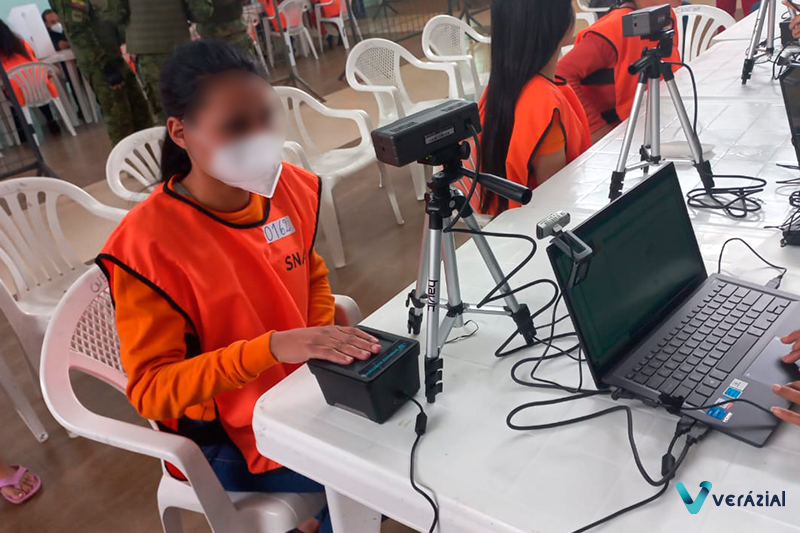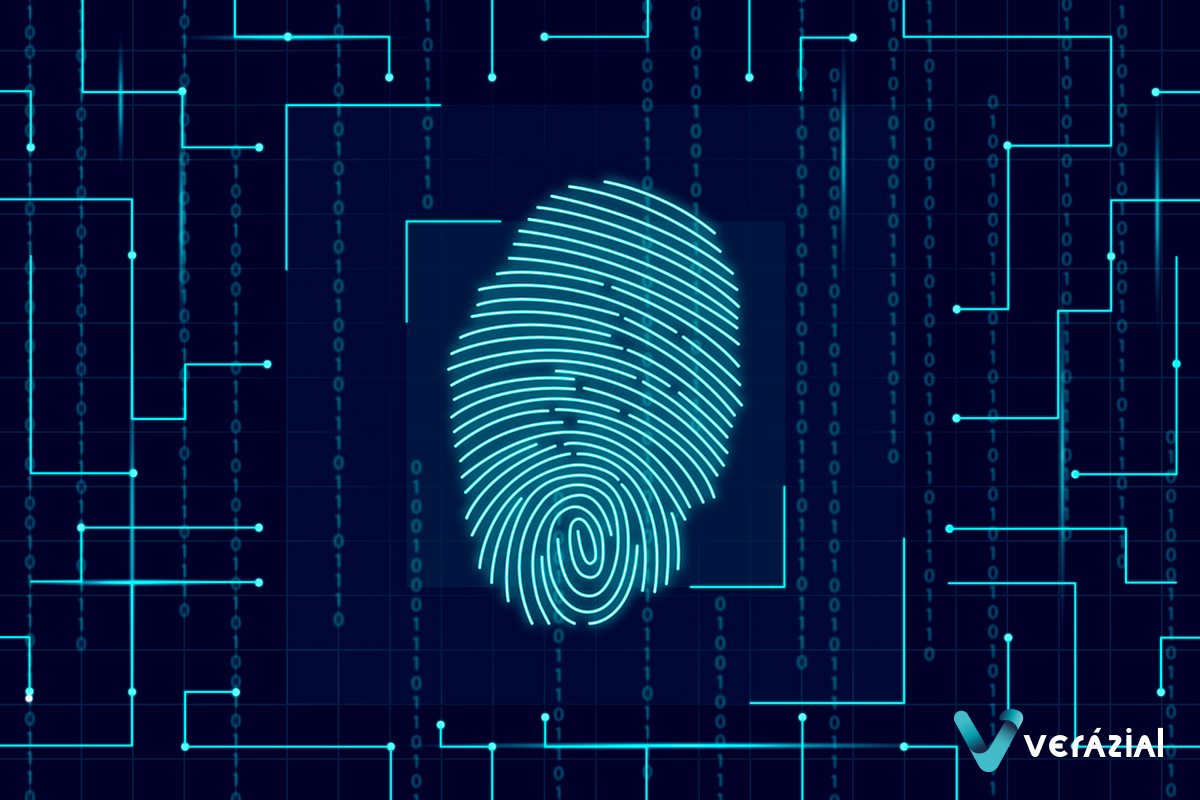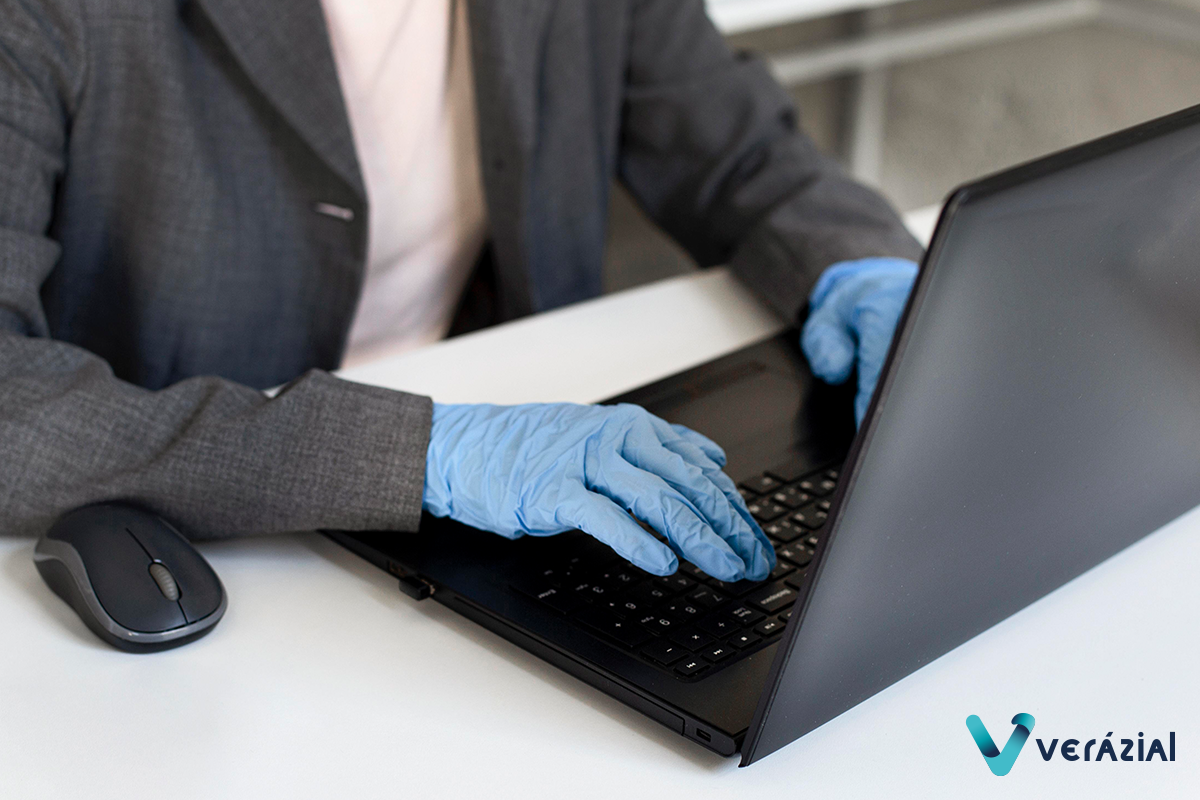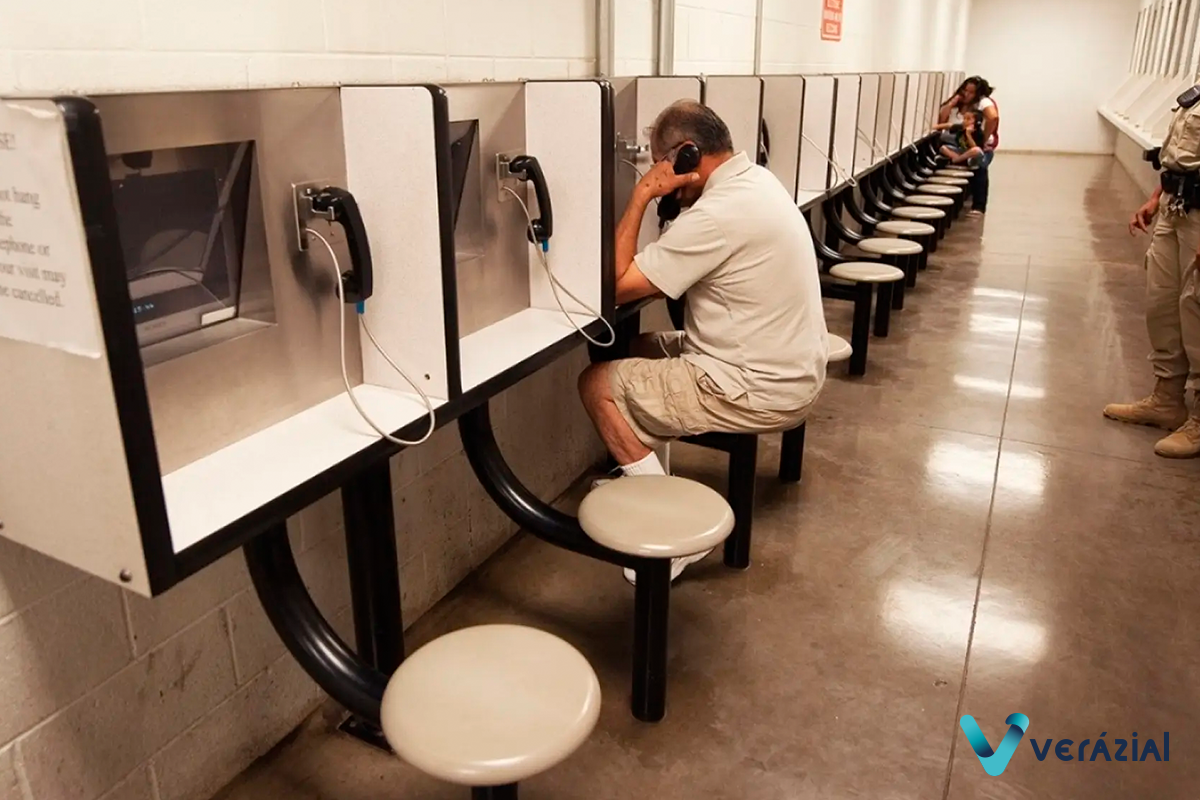Efficient Inmate Management: Biometrics as the key to Prison Census
Traditional identification methods for prison census can be flawed, compromising security and accuracy in the registration of individuals. The adoption of biometric technologies, such as iris, facial and fingerprint recognition, provides a more accurate and reliable solution to uniquely identify inmates, staff, visitors and vendors, thereby preventing impersonation and errors in census management.
Prisons around the world face critical challenges related to overcrowding, lack of resources and the growing need to improve security and administrative efficiency. With the increasing prison population and the complexities of inmate management, the prison census has become a fundamental tool for the effective functioning of institutions. Proper management of this census not only facilitates inmate administration, but also enhances security within the facilities and prevents serious incidents such as identity theft or record tampering.
However, traditional methods of registering inmates and visitors often result in frequent administrative errors and data duplication, leading to confusion, process delays and an increased risk of security breaches.
Proper management of inmate, visitor and staff data is crucial to the efficient operation of any prison. The absence of a reliable identification and record-keeping system can have serious consequences. Errors such as mistaken identities, duplicate records or the omission of essential information can lead to critical security breaches. These failures may result in unauthorized access to restricted areas, identity theft or, in the most extreme cases, the wrongful release of inmates. Such errors not only compromise prison security, but also endanger public safety and undermine confidence in the justice system.
Biometrics as a solution for prison census management

Biometrics emerges as an innovative and effective solution for optimizing prison census management. This technology enables the unique and unequivocal identification of inmates, staff, visitors and suppliers, ensuring a precise and reliable control over all individuals registered in the system.
The most widely used biometric methods, such as facial recognition, fingerprint scanning, iris recognition, along with rolled fingerprints and palm prints in the security sector, ensure accurate and duplicate-free records. The integration of these systems facilitates a comprehensive identification process, minimizing errors, even in cases of physical similarities or possible confusions.
To enhance the security and accuracy of the prison census, the implementation of biometric functions ensures an up-to-date and reliable record of all individuals interacting with the prison system. The process is as follows:
- Registration and identity verification: The process begins with the registration of biometric data of individuals, using advanced technologies such as iris, fingerprint (flat and rolled), facial and palm print recognition. This system not only captures biometric data, but also automatically cross-checks it with other existing records in the database, ensuring that no individual is registered under multiple identities.
- Supplementary inmate information: For inmates, biographic data is collected alongside additional relevant details, such as health records, personal belongings and court documents. These comprehensive records help create a complete and accurate profile of each inmate. Additionally, belongings handed over during admission are managed using biometric signatures from both the inmate and the receiving officer. The return of these belongings follows the same process, using biometric signatures to ensure accuracy and prevent discrepancies.
- Updating and deletion of data: The system allows for the updating and deletion of biographical and biometric data in the database, ensuring that information is always up-to-date and that records are deleted when no longer needed.
- Search and Identification: All individuals in the database can be easily identified and located through various methods:
- 1:N Biometric Identification: Enables a person to be searched in a large database through their biometric characteristics (such as iris, fingerprint, etc.), with no possibility of error.
- 1:1 Biometric Verification: Used to verify an individual’s identity in situations such as permit assignment or critical security scenarios.
- Biographic data search: Searches can also be conducted using biographical information, such as name or ID number, to complement biometric searches.
- External identity verification: Identity verification extends beyond internal data. During a census, an individual’s biometrics can be compared against an external database, such as a civil registry, to ensure the individual matches the identity they present. This additional verification is carried out using biometric samples collected at the time of entry.
Benefits of conducting a Prison Census using Biometric Technology
- Reduction of administrative errors and identity theft by guaranteeing the unique identification of each individual, eliminating the risk of duplicate or incorrect records. This prevents serious errors such as improper exit authorizations or unauthorized access to restricted areas, thereby strengthening control and security within the prison.
- Fast and accurate identification in real-time, enables quick and precise identification of inmates, staff, visitors and suppliers. This is crucial in critical situations, such as the authorization of exit permits or the supervision of movements, helping to avoid security incidents and ensuring total control over the internal population.
- Increased operational efficiency. By automating identification processes, the administrative burden is significantly reduced, allowing staff to focus on strategic and security tasks. This streamlines daily management and improves emergency response.
- Resource optimization by avoiding data duplication and reducing repetitive manual tasks, thereby optimizing the use of human and technological resources. This not only improves efficiency, but also minimizes operating costs associated with management errors.
- Improved inter-agency coordination. The integration of biometric technologies in the prison census not only enhances security and efficiency, but also strengthens collaboration between different government entities, such as security forces and civil registries. This interconnection improves data traceability, provides broader protection for society and adds an extra layer of security in critical procedures, such as permit authorization or the management of high-risk inmates.
We invite you to read our article on the Visitor control in penitentiary centers with biometric technologies.
Discover Verázial ID Prisons, a secure solution specially designed for correctional facilities that comprehensively addresses the identification challenges of inmates, staff, visitors and outsiders in these environments.
Contact us for a demonstration and/or personalized study.
Efficient Inmate Management: Biometrics as the key to Prison Census
Traditional identification methods for prison census can be flawed, compromising security and accuracy in the registration of individuals. The adoption of biometric technologies, such as iris, facial and fingerprint recognition, provides a more accurate and reliable solution to uniquely identify inmates, staff, visitors and vendors, thereby preventing impersonation and errors in census management.
Prisons around the world face critical challenges related to overcrowding, lack of resources and the growing need to improve security and administrative efficiency. With the increasing prison population and the complexities of inmate management, the prison census has become a fundamental tool for the effective functioning of institutions. Proper management of this census not only facilitates inmate administration, but also enhances security within the facilities and prevents serious incidents such as identity theft or record tampering.
However, traditional methods of registering inmates and visitors often result in frequent administrative errors and data duplication, leading to confusion, process delays and an increased risk of security breaches.
Proper management of inmate, visitor and staff data is crucial to the efficient operation of any prison. The absence of a reliable identification and record-keeping system can have serious consequences. Errors such as mistaken identities, duplicate records or the omission of essential information can lead to critical security breaches. These failures may result in unauthorized access to restricted areas, identity theft or, in the most extreme cases, the wrongful release of inmates. Such errors not only compromise prison security, but also endanger public safety and undermine confidence in the justice system.
Biometrics as a solution for prison census management

Biometrics emerges as an innovative and effective solution for optimizing prison census management. This technology enables the unique and unequivocal identification of inmates, staff, visitors and suppliers, ensuring a precise and reliable control over all individuals registered in the system.
The most widely used biometric methods, such as facial recognition, fingerprint scanning, iris recognition, along with rolled fingerprints and palm prints in the security sector, ensure accurate and duplicate-free records. The integration of these systems facilitates a comprehensive identification process, minimizing errors, even in cases of physical similarities or possible confusions.
To enhance the security and accuracy of the prison census, the implementation of biometric functions ensures an up-to-date and reliable record of all individuals interacting with the prison system. The process is as follows:
- Registration and identity verification: The process begins with the registration of biometric data of individuals, using advanced technologies such as iris, fingerprint (flat and rolled), facial and palm print recognition. This system not only captures biometric data, but also automatically cross-checks it with other existing records in the database, ensuring that no individual is registered under multiple identities.
- Supplementary inmate information: For inmates, biographic data is collected alongside additional relevant details, such as health records, personal belongings and court documents. These comprehensive records help create a complete and accurate profile of each inmate. Additionally, belongings handed over during admission are managed using biometric signatures from both the inmate and the receiving officer. The return of these belongings follows the same process, using biometric signatures to ensure accuracy and prevent discrepancies.
- Updating and deletion of data: The system allows for the updating and deletion of biographical and biometric data in the database, ensuring that information is always up-to-date and that records are deleted when no longer needed.
- Search and Identification: All individuals in the database can be easily identified and located through various methods:
- 1:N Biometric Identification: Enables a person to be searched in a large database through their biometric characteristics (such as iris, fingerprint, etc.), with no possibility of error.
- 1:1 Biometric Verification: Used to verify an individual’s identity in situations such as permit assignment or critical security scenarios.
- Biographic data search: Searches can also be conducted using biographical information, such as name or ID number, to complement biometric searches.
- External identity verification: Identity verification extends beyond internal data. During a census, an individual’s biometrics can be compared against an external database, such as a civil registry, to ensure the individual matches the identity they present. This additional verification is carried out using biometric samples collected at the time of entry.
Benefits of conducting a Prison Census using Biometric Technology
- Reduction of administrative errors and identity theft by guaranteeing the unique identification of each individual, eliminating the risk of duplicate or incorrect records. This prevents serious errors such as improper exit authorizations or unauthorized access to restricted areas, thereby strengthening control and security within the prison.
- Fast and accurate identification in real-time, enables quick and precise identification of inmates, staff, visitors and suppliers. This is crucial in critical situations, such as the authorization of exit permits or the supervision of movements, helping to avoid security incidents and ensuring total control over the internal population.
- Increased operational efficiency. By automating identification processes, the administrative burden is significantly reduced, allowing staff to focus on strategic and security tasks. This streamlines daily management and improves emergency response.
- Resource optimization by avoiding data duplication and reducing repetitive manual tasks, thereby optimizing the use of human and technological resources. This not only improves efficiency, but also minimizes operating costs associated with management errors.
- Improved inter-agency coordination. The integration of biometric technologies in the prison census not only enhances security and efficiency, but also strengthens collaboration between different government entities, such as security forces and civil registries. This interconnection improves data traceability, provides broader protection for society and adds an extra layer of security in critical procedures, such as permit authorization or the management of high-risk inmates.
We invite you to read our article on the Visitor control in penitentiary centers with biometric technologies.
Discover Verázial ID Prisons, a secure solution specially designed for correctional facilities that comprehensively addresses the identification challenges of inmates, staff, visitors and outsiders in these environments.
Contact us for a demonstration and/or personalized study.
Efficient Inmate Management: Biometrics as the key to Prison Census
Traditional identification methods for prison census can be flawed, compromising security and accuracy in the registration of individuals. The adoption of biometric technologies, such as iris, facial and fingerprint recognition, provides a more accurate and reliable solution to uniquely identify inmates, staff, visitors and vendors, thereby preventing impersonation and errors in census management.
Prisons around the world face critical challenges related to overcrowding, lack of resources and the growing need to improve security and administrative efficiency. With the increasing prison population and the complexities of inmate management, the prison census has become a fundamental tool for the effective functioning of institutions. Proper management of this census not only facilitates inmate administration, but also enhances security within the facilities and prevents serious incidents such as identity theft or record tampering.
However, traditional methods of registering inmates and visitors often result in frequent administrative errors and data duplication, leading to confusion, process delays and an increased risk of security breaches.
Proper management of inmate, visitor and staff data is crucial to the efficient operation of any prison. The absence of a reliable identification and record-keeping system can have serious consequences. Errors such as mistaken identities, duplicate records or the omission of essential information can lead to critical security breaches. These failures may result in unauthorized access to restricted areas, identity theft or, in the most extreme cases, the wrongful release of inmates. Such errors not only compromise prison security, but also endanger public safety and undermine confidence in the justice system.
Biometrics as a solution for prison census management

Biometrics emerges as an innovative and effective solution for optimizing prison census management. This technology enables the unique and unequivocal identification of inmates, staff, visitors and suppliers, ensuring a precise and reliable control over all individuals registered in the system.
The most widely used biometric methods, such as facial recognition, fingerprint scanning, iris recognition, along with rolled fingerprints and palm prints in the security sector, ensure accurate and duplicate-free records. The integration of these systems facilitates a comprehensive identification process, minimizing errors, even in cases of physical similarities or possible confusions.
To enhance the security and accuracy of the prison census, the implementation of biometric functions ensures an up-to-date and reliable record of all individuals interacting with the prison system. The process is as follows:
- Registration and identity verification: The process begins with the registration of biometric data of individuals, using advanced technologies such as iris, fingerprint (flat and rolled), facial and palm print recognition. This system not only captures biometric data, but also automatically cross-checks it with other existing records in the database, ensuring that no individual is registered under multiple identities.
- Supplementary inmate information: For inmates, biographic data is collected alongside additional relevant details, such as health records, personal belongings and court documents. These comprehensive records help create a complete and accurate profile of each inmate. Additionally, belongings handed over during admission are managed using biometric signatures from both the inmate and the receiving officer. The return of these belongings follows the same process, using biometric signatures to ensure accuracy and prevent discrepancies.
- Updating and deletion of data: The system allows for the updating and deletion of biographical and biometric data in the database, ensuring that information is always up-to-date and that records are deleted when no longer needed.
- Search and Identification: All individuals in the database can be easily identified and located through various methods:
- 1:N Biometric Identification: Enables a person to be searched in a large database through their biometric characteristics (such as iris, fingerprint, etc.), with no possibility of error.
- 1:1 Biometric Verification: Used to verify an individual’s identity in situations such as permit assignment or critical security scenarios.
- Biographic data search: Searches can also be conducted using biographical information, such as name or ID number, to complement biometric searches.
- External identity verification: Identity verification extends beyond internal data. During a census, an individual’s biometrics can be compared against an external database, such as a civil registry, to ensure the individual matches the identity they present. This additional verification is carried out using biometric samples collected at the time of entry.
Benefits of conducting a Prison Census using Biometric Technology
- Reduction of administrative errors and identity theft by guaranteeing the unique identification of each individual, eliminating the risk of duplicate or incorrect records. This prevents serious errors such as improper exit authorizations or unauthorized access to restricted areas, thereby strengthening control and security within the prison.
- Fast and accurate identification in real-time, enables quick and precise identification of inmates, staff, visitors and suppliers. This is crucial in critical situations, such as the authorization of exit permits or the supervision of movements, helping to avoid security incidents and ensuring total control over the internal population.
- Increased operational efficiency. By automating identification processes, the administrative burden is significantly reduced, allowing staff to focus on strategic and security tasks. This streamlines daily management and improves emergency response.
- Resource optimization by avoiding data duplication and reducing repetitive manual tasks, thereby optimizing the use of human and technological resources. This not only improves efficiency, but also minimizes operating costs associated with management errors.
- Improved inter-agency coordination. The integration of biometric technologies in the prison census not only enhances security and efficiency, but also strengthens collaboration between different government entities, such as security forces and civil registries. This interconnection improves data traceability, provides broader protection for society and adds an extra layer of security in critical procedures, such as permit authorization or the management of high-risk inmates.
We invite you to read our article on the Visitor control in penitentiary centers with biometric technologies.
Discover Verázial ID Prisons, a secure solution specially designed for correctional facilities that comprehensively addresses the identification challenges of inmates, staff, visitors and outsiders in these environments.
Contact us for a demonstration and/or personalized study.
You May Also Like
You May Also Like





